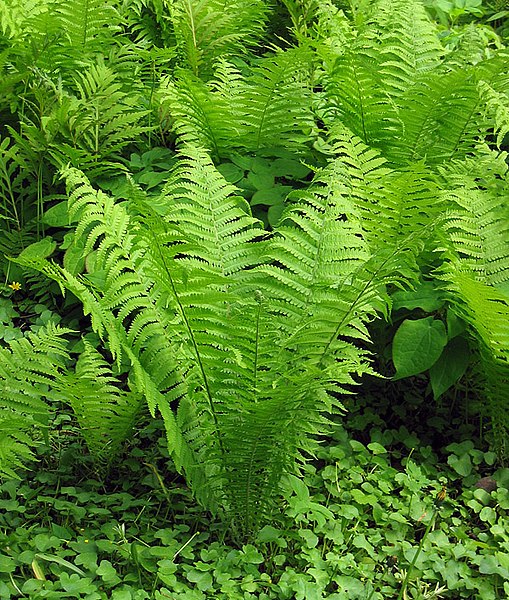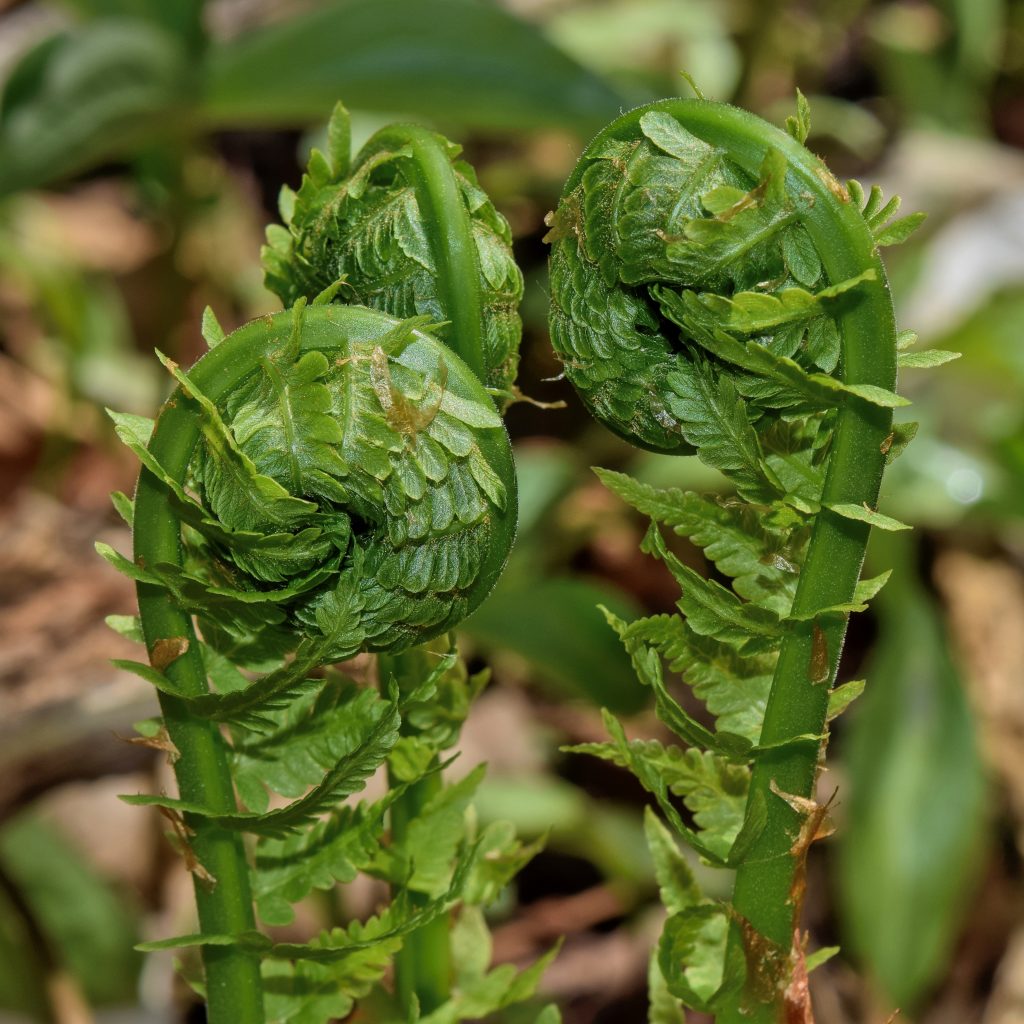
Native to eastern North America, Europe, and eastern Asia, this clump-forming, deciduous fern is a member of the Onocleaceae, a small plant family of ferns distinguished by having two kinds of fronds that differ in appearance. The sterile fronds appear as fiddleheads early in the growing season and form ka vase-shaped crown up to 6′ tall. They unfurl to form medium green, finely dissected, feather-like fronds resembling ostrich plumes before slowly deteriorating during the summer. The fertile fronds develop in mid-summer to autumn and are 2′ tall, brown when ripe, and persist into winter. Also known as shuttlecock fern and fiddlehead fern, ostrich fern prefers cool summer climates and is generally intolerant of the heat and humidity. They are especially attractive in woodland, shade, native plant, cottage, and bog gardens but are also valued for rain gardens and as plantings along streams and around ponds. The genus name, Matteuccia, honors Carlo Matteucci (1800-1863), Italian physicist. The specific epithet, struthiopteris, comes from the ancient Greek words στρουθίων (strouthíōn) meaning ostrich, and πτερίς (pterís) meaning fern. Photo Credit Wikipedia

Type: Herbaceous perennial
Bloom: None
Size: 3-6′ H x 5-8′ W
Light: Part to full shade;
Soil: Average, consistently moist to wet
Hardiness: Zones 3-7
Care: Protect from wind.
Pests and Diseases: None of significance
Propagation: Division in spring; spores
Companion Plants: Virginia bluebells (Mertensia virginica), astilbes, other ferns, Japanese woodland primrose (Primula kisoana), Trillium, fern leaf bleeding heart (Dicentra eximia).
Outstanding Selections: None available
Photo Credit: Wikipedia